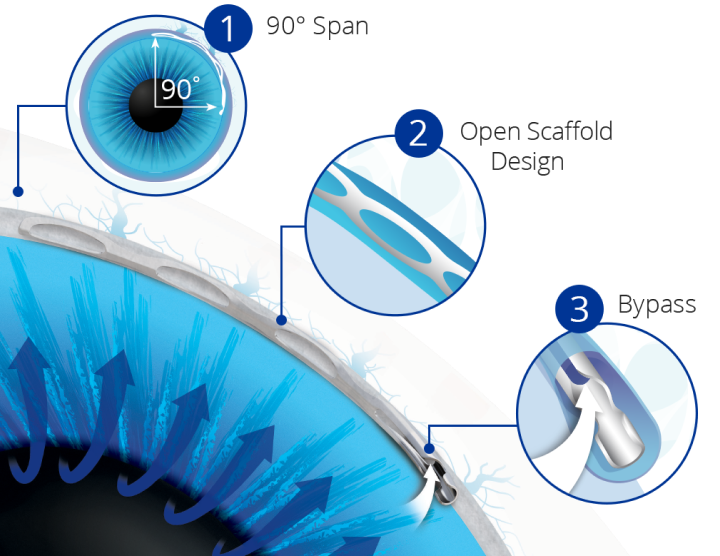Glaucoma Drainage Devices (Tube Shunt Surgery) in Germany
When medications and laser therapy can no longer control intraocular pressure (IOP), many patients in Germany turn to glaucoma drainage device surgery, also known as tube shunt surgery. This advanced treatment offers a long-term solution for severe or complex glaucoma cases, using small implants to help fluid drain more efficiently from the eye.
Germany’s medical centers are renowned for their cutting-edge ophthalmic technology, skilled surgeons, and strong post-operative care—all of which contribute to excellent surgical outcomes for glaucoma patients.
1. Purpose of Glaucoma Drainage Device Surgery
The goal of this surgery is to reduce intraocular pressure by providing an alternative drainage pathway for the eye’s natural fluid (aqueous humor). It’s often recommended for:
Patients with unsuccessful trabeculectomy or laser procedures
Individuals with scarred conjunctiva from previous eye surgeries
Secondary glaucoma due to trauma, inflammation, or congenital conditions
By maintaining steady eye pressure, the device helps preserve remaining vision and prevents further optic nerve damage.
2. How Tube Shunt Surgery is Performed in Germany
Germany’s ophthalmic surgeons perform this procedure under highly controlled, sterile conditions using micro-precision instruments.
Step-by-Step Overview:
The surgery is usually done under local anesthesia.
A tiny tube (shunt) made of medical-grade silicone is placed inside the eye.
The tube is connected to a small plate positioned beneath the conjunctiva, where fluid can safely collect and be absorbed by surrounding tissues.
The incision is closed carefully to minimize scarring and infection risk.
The entire procedure typically lasts 45 to 90 minutes, depending on the patient’s condition and the type of implant used.
3. Types of Glaucoma Drainage Devices Used
Germany offers a variety of FDA-approved and CE-certified implants designed for long-term stability and comfort. The most common include:
Ahmed Glaucoma Valve (AGV) – Features a valve mechanism to regulate pressure flow
Baerveldt Glaucoma Implant (BGI) – Provides a larger drainage area for advanced cases
Molteno Implant – A widely used non-valved option for complex glaucoma
German clinics often choose the device based on the patient’s IOP history, eye anatomy, and previous treatment response.
4. Benefits of Tube Shunt Surgery in Germany
Consistent and long-term IOP control
Effective for resistant or complex glaucoma
Reduces dependence on multiple medications
Short hospital stay and quick recovery under modern care systems
Performed by specialized ophthalmic surgeons with high success rates
Most patients report stable pressure and improved comfort within weeks after the procedure.
5. Possible Risks and Complications
Although generally safe, this surgery may involve some risks. German hospitals take great care to minimize complications through careful planning and advanced monitoring.
Potential side effects include:
Temporary eye redness or swelling
Mild discomfort after surgery
Over- or under-drainage of fluid (rare)
Infection or tube blockage in isolated cases
All patients undergo regular post-operative follow-ups to ensure the tube functions properly and to adjust treatment if needed.
6. Recovery and Aftercare
Post-surgery care is essential for successful healing and long-term results. German specialists provide personalized recovery programs that include:
Antibiotic and anti-inflammatory eye drops
Avoiding strenuous activities for several weeks
Scheduled follow-ups to monitor pressure and wound healing
Vision may be blurry for a short time, but most patients recover within 2–4 weeks, depending on individual healing response.
7. Cost and Insurance Coverage
The cost of glaucoma drainage device surgery in Germany varies by clinic, implant type, and insurance coverage. Public health insurance (GKV) often covers medically necessary procedures, while private insurance (PKV) may reimburse advanced or customized implant types.
Compare Germany clinic rates for glaucoma surgery.
This can help patients estimate typical costs before undergoing the procedure.
8. Success Rate and Clinical Outcomes
Germany has one of the highest reported success rates for glaucoma tube surgeries globally. Studies show IOP reduction in 75–90% of patients within the first year, with long-term stability over several years.
Success is influenced by:
Surgeon experience and device selection
Patient adherence to post-operative care
Regular monitoring for potential complications
With proper management, most patients maintain stable eye pressure and significantly reduced need for eye drops.
9. Why Choose Germany for Tube Shunt Surgery
Patients from across Europe and beyond choose Germany for glaucoma drainage device implantation because of:
Advanced microsurgical equipment and operating standards
Specialized glaucoma centers with multidisciplinary teams
Transparent cost systems and insurance cooperation
High patient satisfaction and low complication rates
German ophthalmologists emphasize personalized care, ensuring every patient receives the safest and most effective treatment possible.
10. Final Thoughts
Glaucoma drainage device (tube shunt) surgery in Germany offers a reliable, lasting solution for patients with advanced or medication-resistant glaucoma. With exceptional medical expertise, advanced implants, and careful post-surgery management, Germany stands at the forefront of glaucoma care in Europe.
If other treatments have failed to control your eye pressure, discussing tube shunt surgery with a qualified German ophthalmologist may be the next important step toward protecting your vision.




